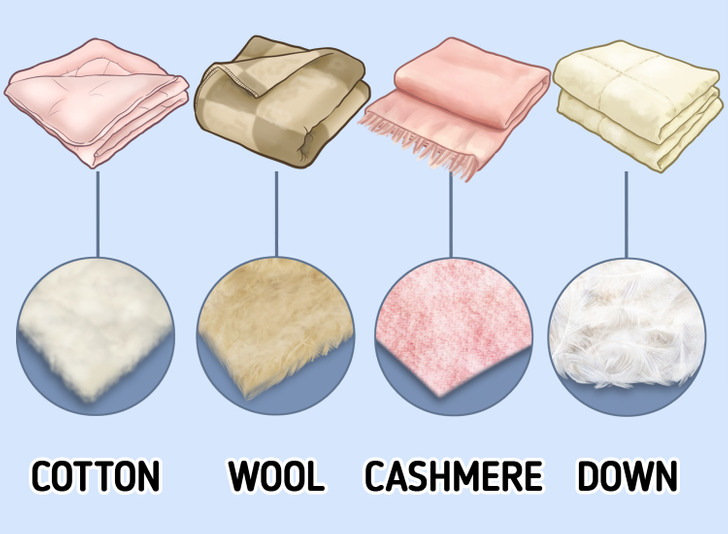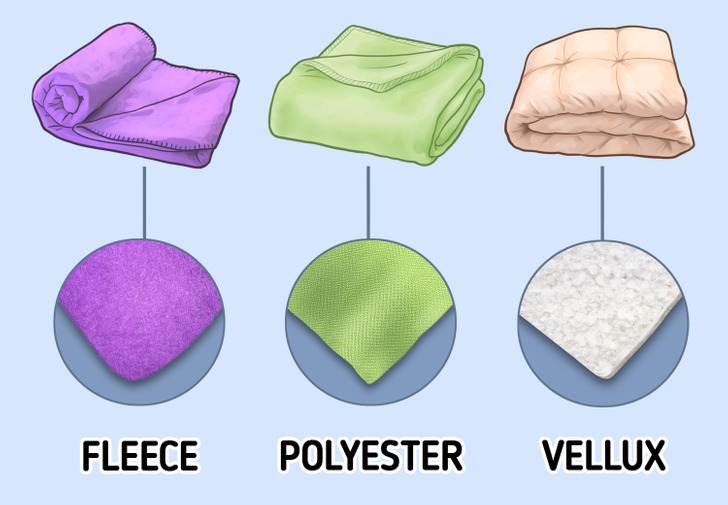How to Choose a Blanket
Several decades ago, there were only a few options when it came to choosing a blanket. But today, there are a lot of different models, textures, fabrics, and properties.
5-Minute Crafts is going to tell you how to choose the right blanket.
Before you buy
- Decide how you will use the blanket.
Do you need a blanket or a comforter to keep you warm in the evening? Do you want to use it alone or share it with someone? Ask these questions before deciding what to buy. - Choose the size.
When choosing a blanket, take the size of your bed into account. The right size is when the blanket covers the entire surface of the mattress, leaving a few inches on the edges. - Think about how warm the blanket should be.
Decide what season you’re going to use the blanket. Maybe it should be very warm, or vice versa, very light and transparent for the air. If you feel cold at night, you should think about thicker blankets, like those made from wool and fleece. If you feel hot at night, choose a light blanket, like one made of cotton. - Don’t forget that some types of fabrics may cause an allergy.
Before buying a woolen blanket or a blanket with down, make sure nobody in your family is allergic to these materials.
What fabric to choose

Natural fabrics:
- Cotton is one of the best fabrics for a light summer blanket. Cotton blankets let the air through and allow you to keep cool. They are soft, quite durable, and can be washed many times. They are great for people with allergies.
- Wool blankets provide excellent insulation, which may come in handy when it’s cold. Wool has good moisture-wicking properties, which will help keep your blanket dry. But remember that woolen blankets may seem rough for people with sensitive skin. They are also not good for those that have allergies.
- Cashmere is a very thin fiber we get from some types of goats. Cashmere blankets are very soft, warm, and nice to touch, and they are usually very expensive.
- Down blankets usually have a layer of down or synthetic substitute sandwiched between layers of fabric. Such blankets are very light and warm. If you are allergic to down, it’s better to buy a synthetic substitute.

Synthetic fabrics:
- Fleece is a great alternative to wool if you have an allergy but want a warm blanket. It feels nice, breathable, quite light, and has good moisture-wicking properties.
- Polyester is an artificial synthetic fiber made from chemicals, like petroleum. In blanket production, it’s often used together with natural fibers, such as cotton. Polyester is very durable but doesn’t let the air through and doesn’t absorb moisture.
- Vellux blankets have a foam middle surrounded by soft nylon fibers. They are very light, soft, and warm. They’re also easy to wash and great for people with allergies.
Share This Article